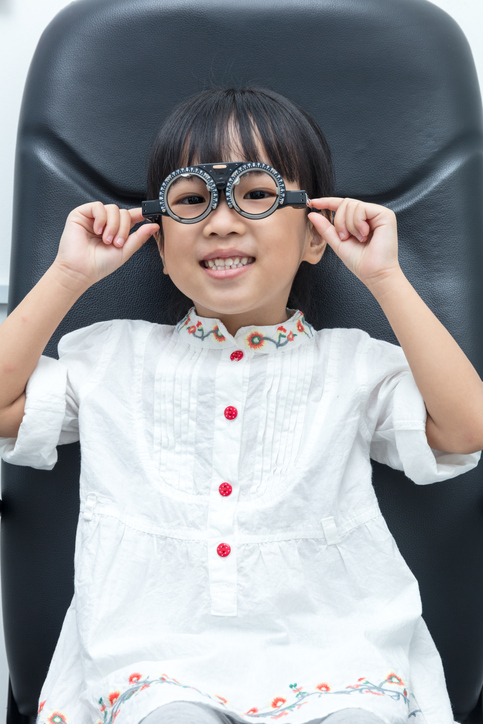 |
This study found that noncycloplegic refraction combined with either uncorrected VA or AL/corneal radius proved most accurate for detecting myopia. Photo: Getty Images. |
Researchers are continually investigating the most effective methods of screening children and adolescents for myopia, an increasing global public health problem. A recent study included a cohort of schoolchildren to evaluate the diagnostic performance of different methods and determine specific strategies that may improve accuracy. Of the tests administered, the team concluded that combining noncycloplegic refraction with either uncorrected VA or AL/corneal curvature radius showed the greatest accuracy in pediatric myopia screening.
The participants included 6,017 children aged four to 15 living in Shanghai, China. Myopia was defined as a cycloplegic spherical equivalent of ≤-0.50D. The presence of myopia in the cohort was 31.8%.
While uncorrected VA alone showed poor accuracy with a sensitivity of 97.7% and a specificity of 33.1%, the combined use of uncorrected VA and noncycloplegic refraction performed much better; these two tests together produced an area under the curve (AUC) of 0.985, while AL/corneal curvature radius and noncycloplegic refraction tests used in tandem showed statistically similar results (AUC 0.987). AUC values were not as impressive among the other screening tests. The researchers wrote, “AUCs for noncycloplegic refraction, the combined use of uncorrected VA and AL/corneal curvature radius, AL/corneal curvature radius and uncorrected VA tests were 0.982, 0.977, 0.954 and 0.928, respectively.” The difference was significant between the four values.
To further increase the accuracy of these tests, the researchers calculated the optimal age-specific cutoffs for each screening method and found that they varied greatly. The best cutoffs for uncorrected VA/noncycloplegic refraction combinations were as follows:
Age (years) | Uncorrected VA | Noncycloplegic |
4-6 | <1.0 | <-0.25D |
7-12 | <1.0 | <-0.50D |
13-15 | <0.8 | <-0.75D |
“If those screening positive were all referred to clinics and corrected with cycloplegic autorefraction data, the relative difference between screening prevalence and the actual prevalence by the gold standard (cycloplegic spherical equivalent of ≤-0.50D) would reduce from 13.2% to 4.7%.”
They concluded that setting age-specific cut-offs, in addition to following up and correcting with data of cycloplegic refraction in children who screen positive for myopia, are effective ways to enhance screening accuracy.
Wang J, Hui Xie H, Morgan I, et al. How to conduct school myopia screening: Comparison among myopia screening tests and determination of associated cutoffs. Asia Pac J Ophthalmol (Phila). January 20, 2022. [Epub ahead of print]. |

